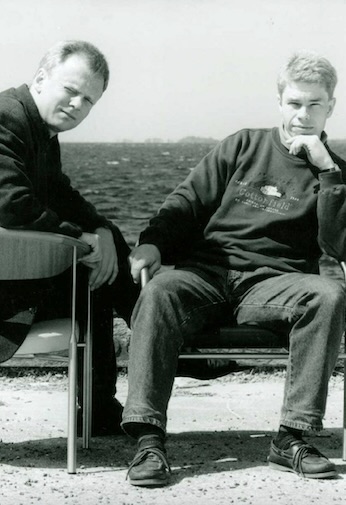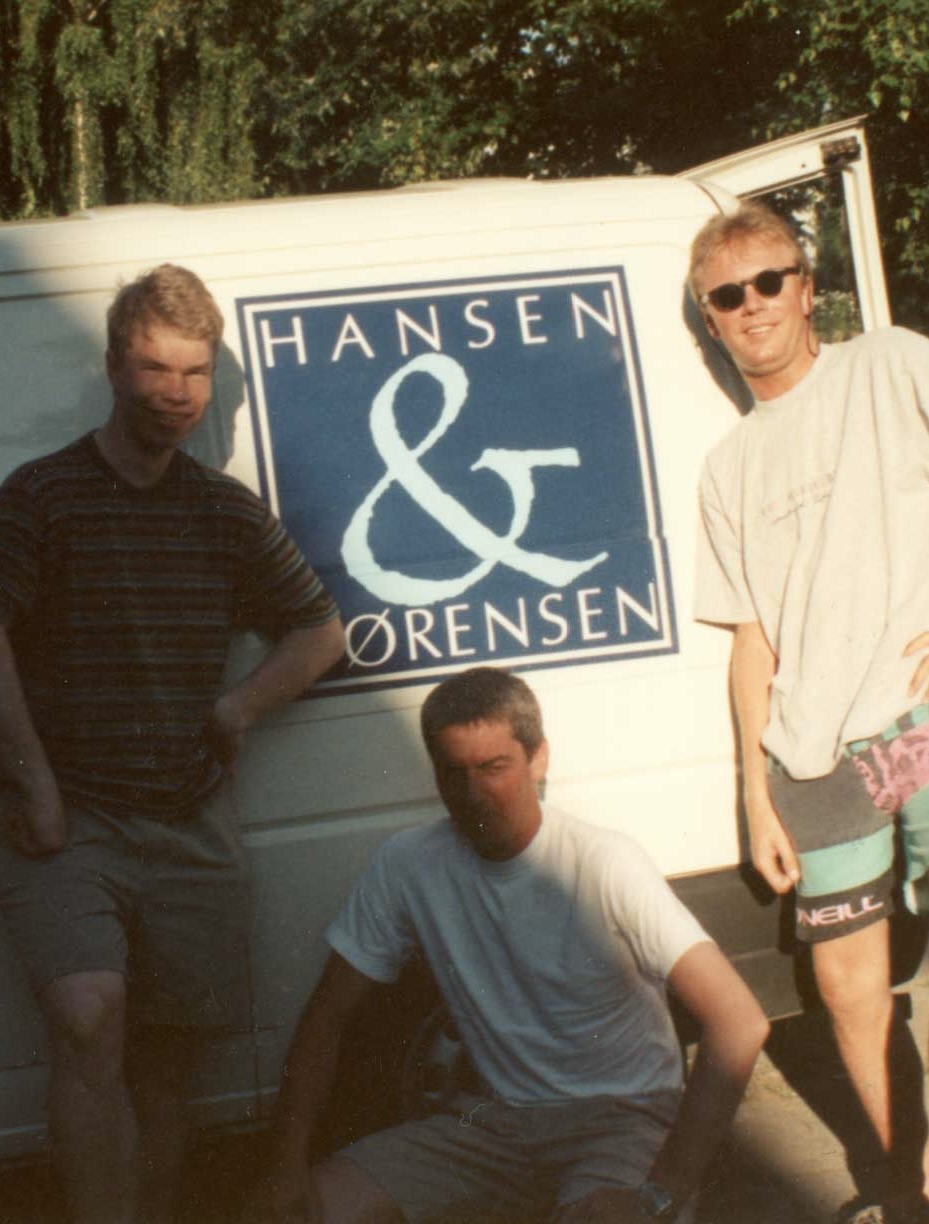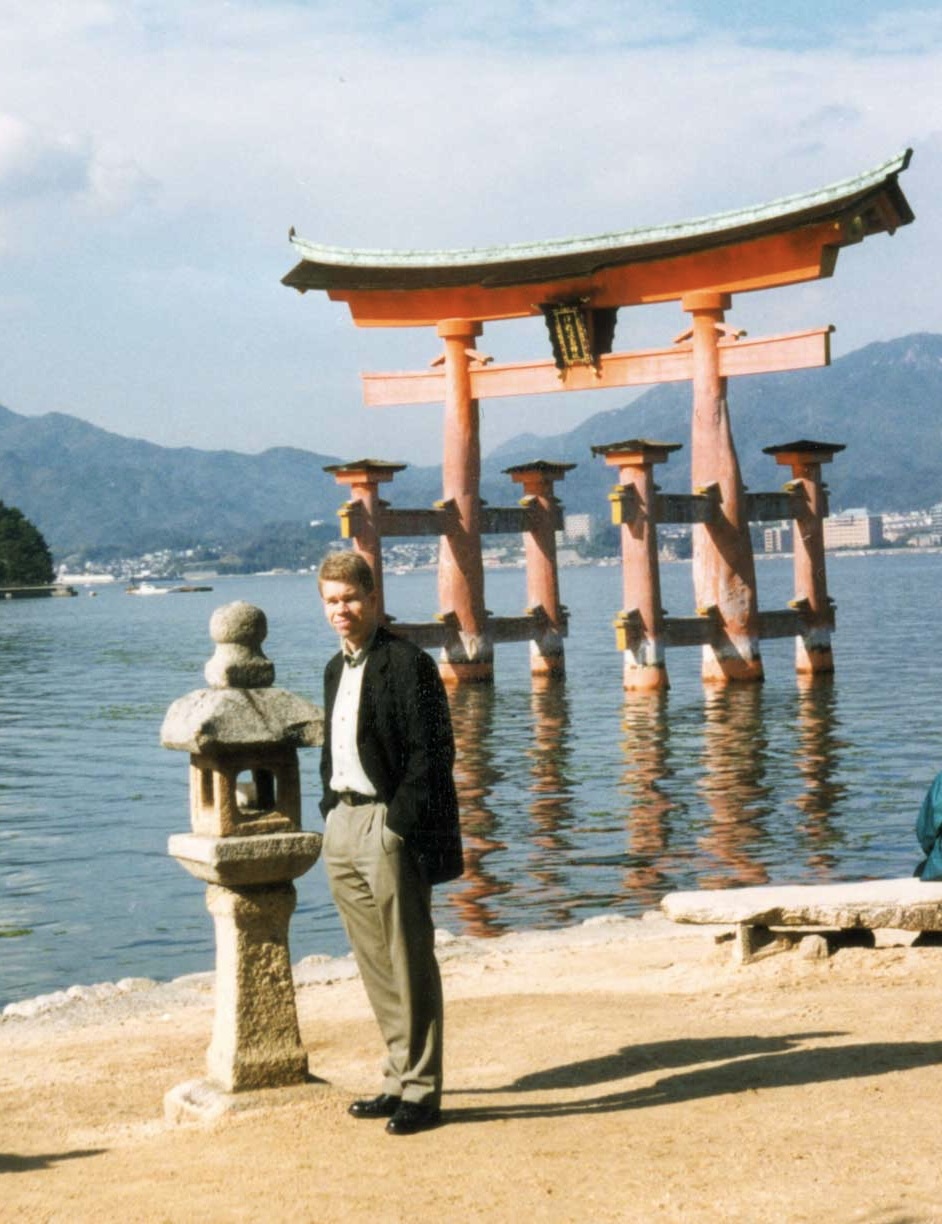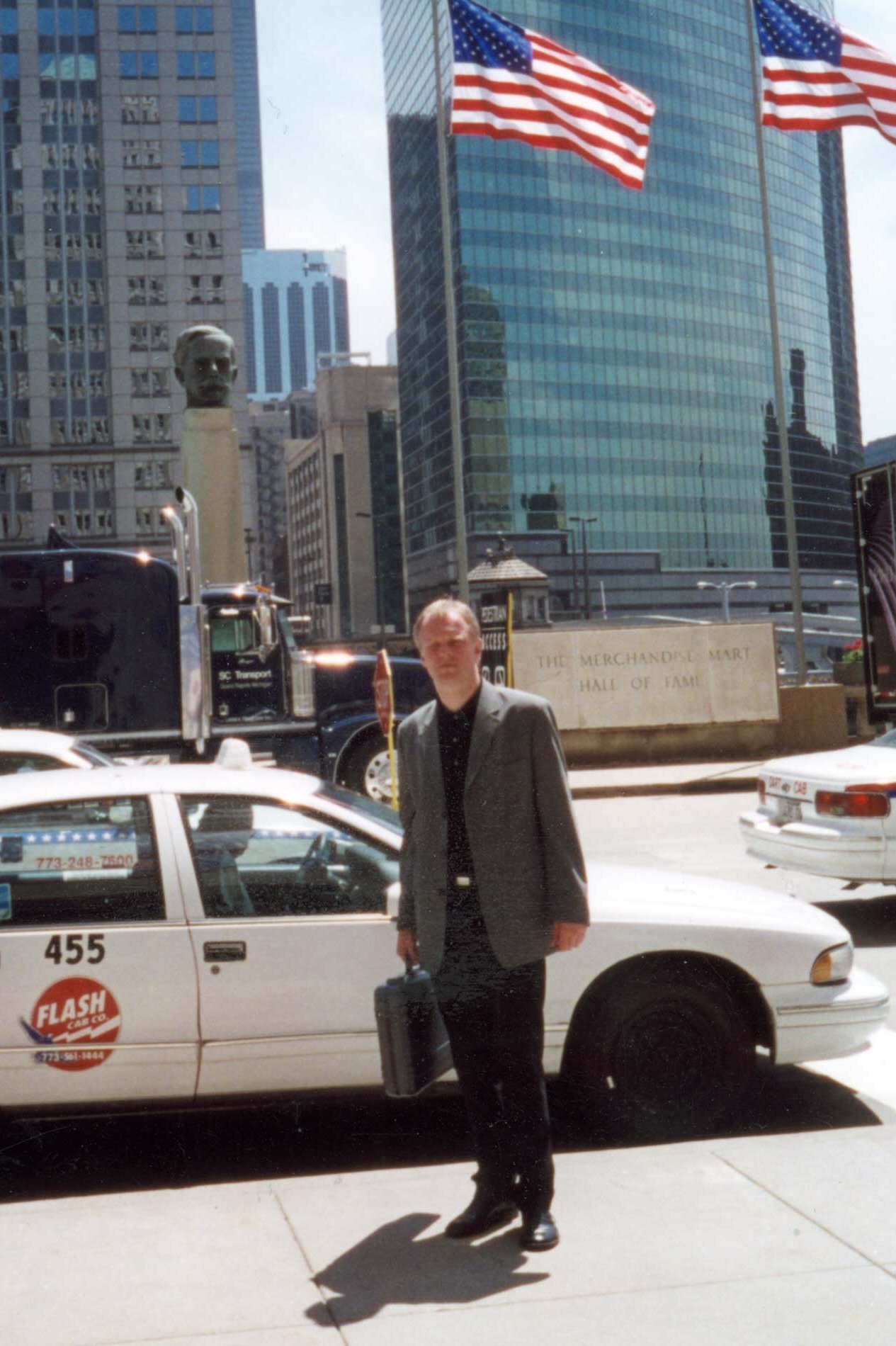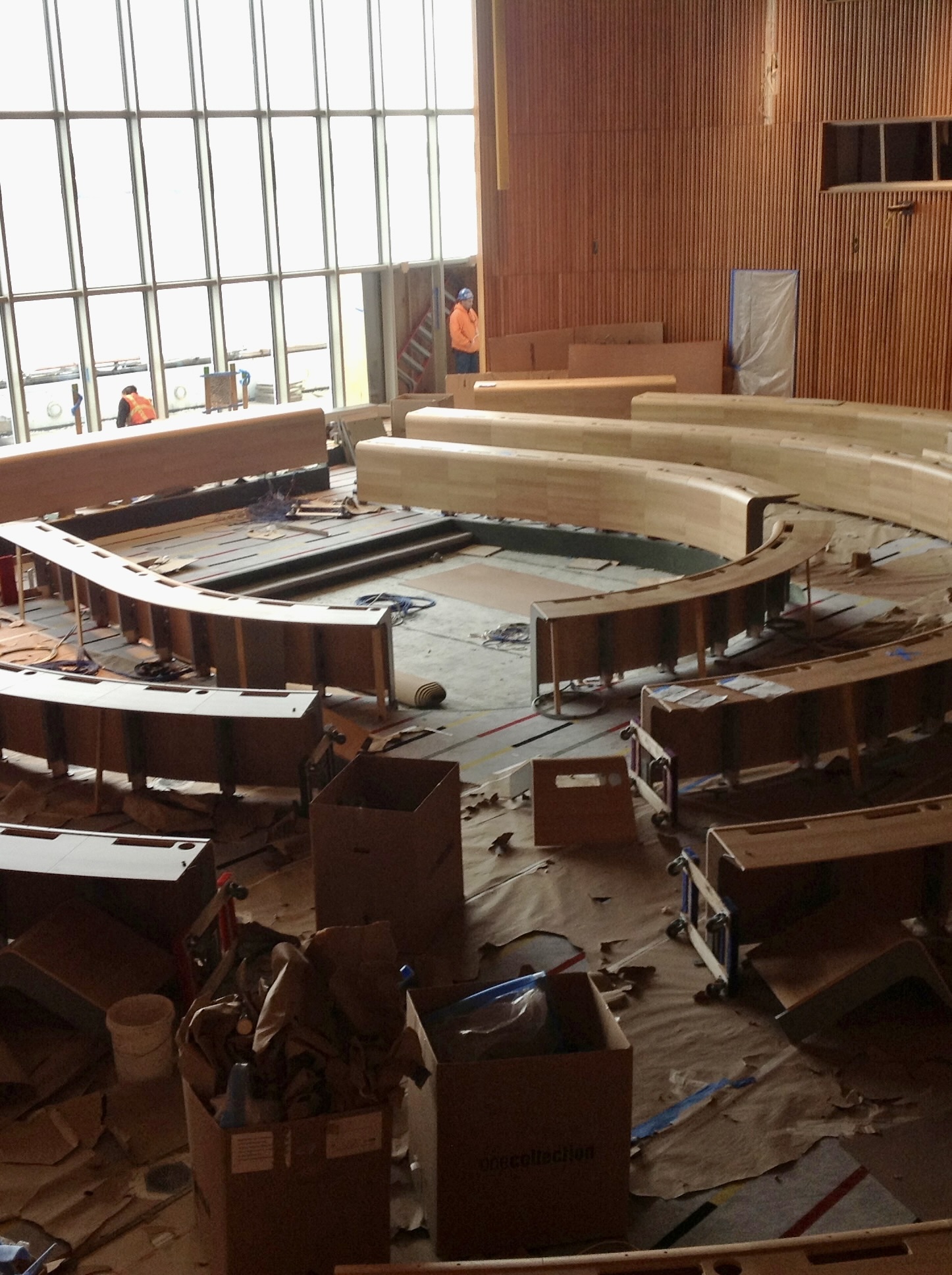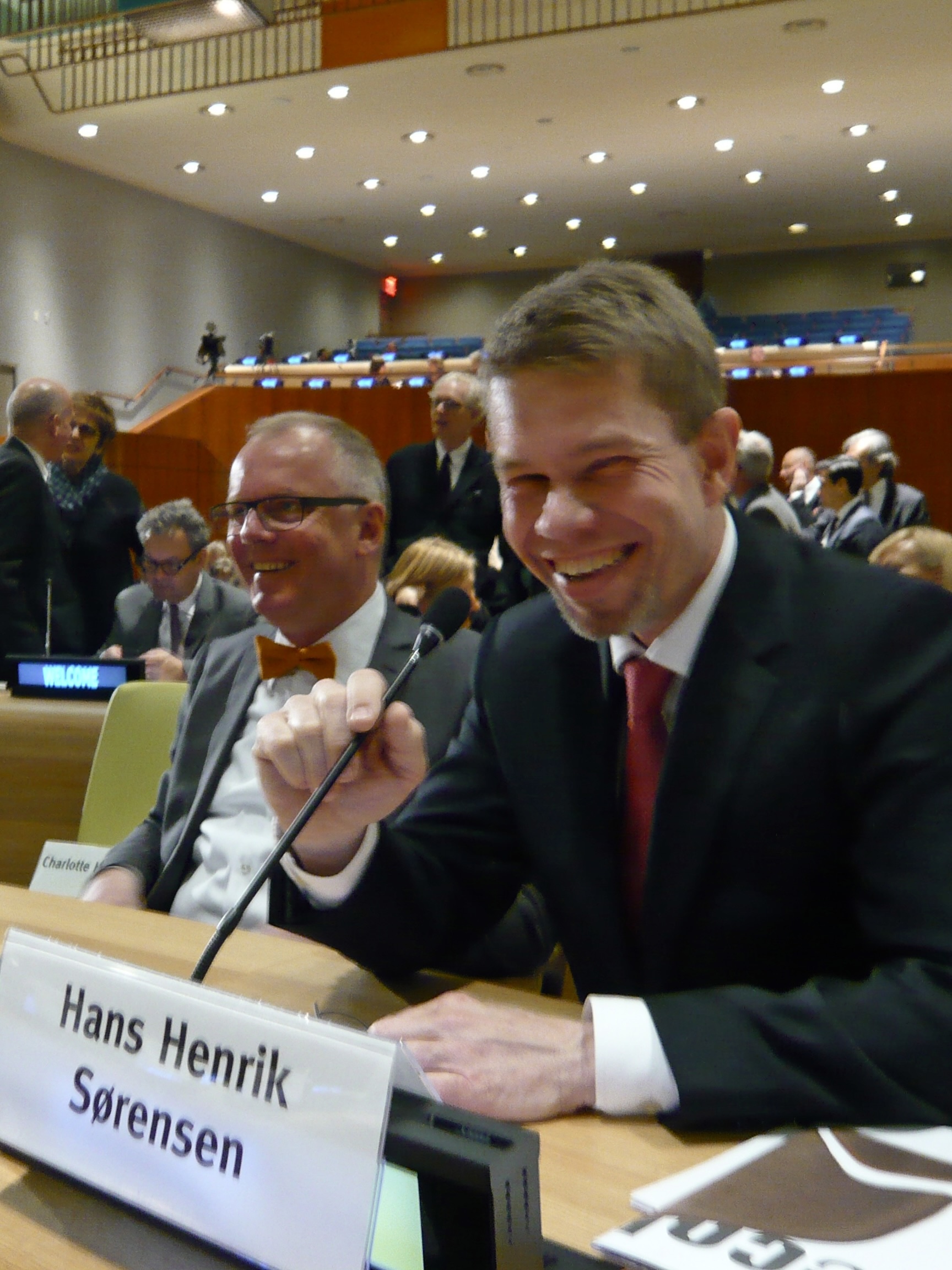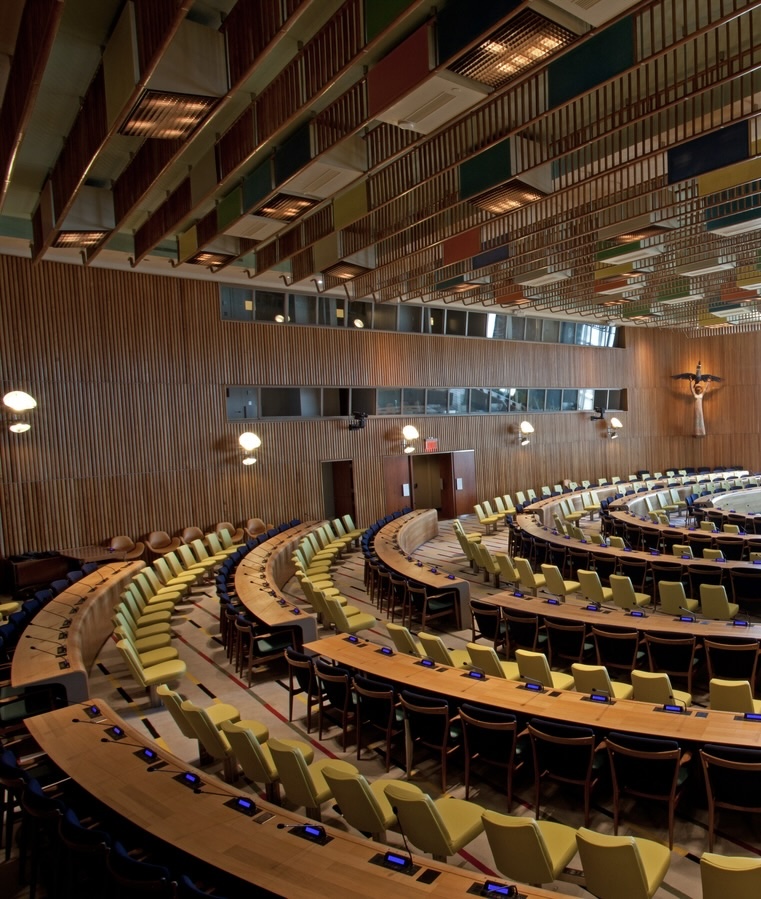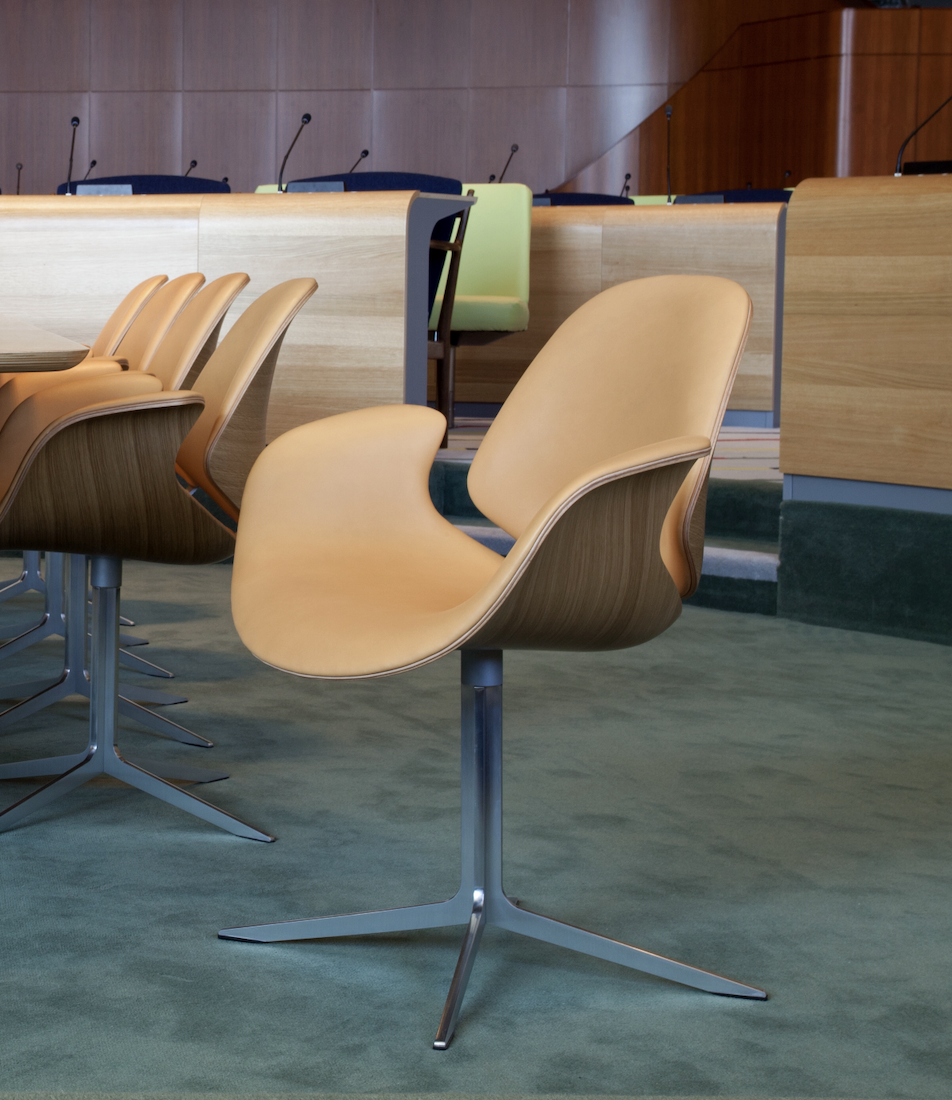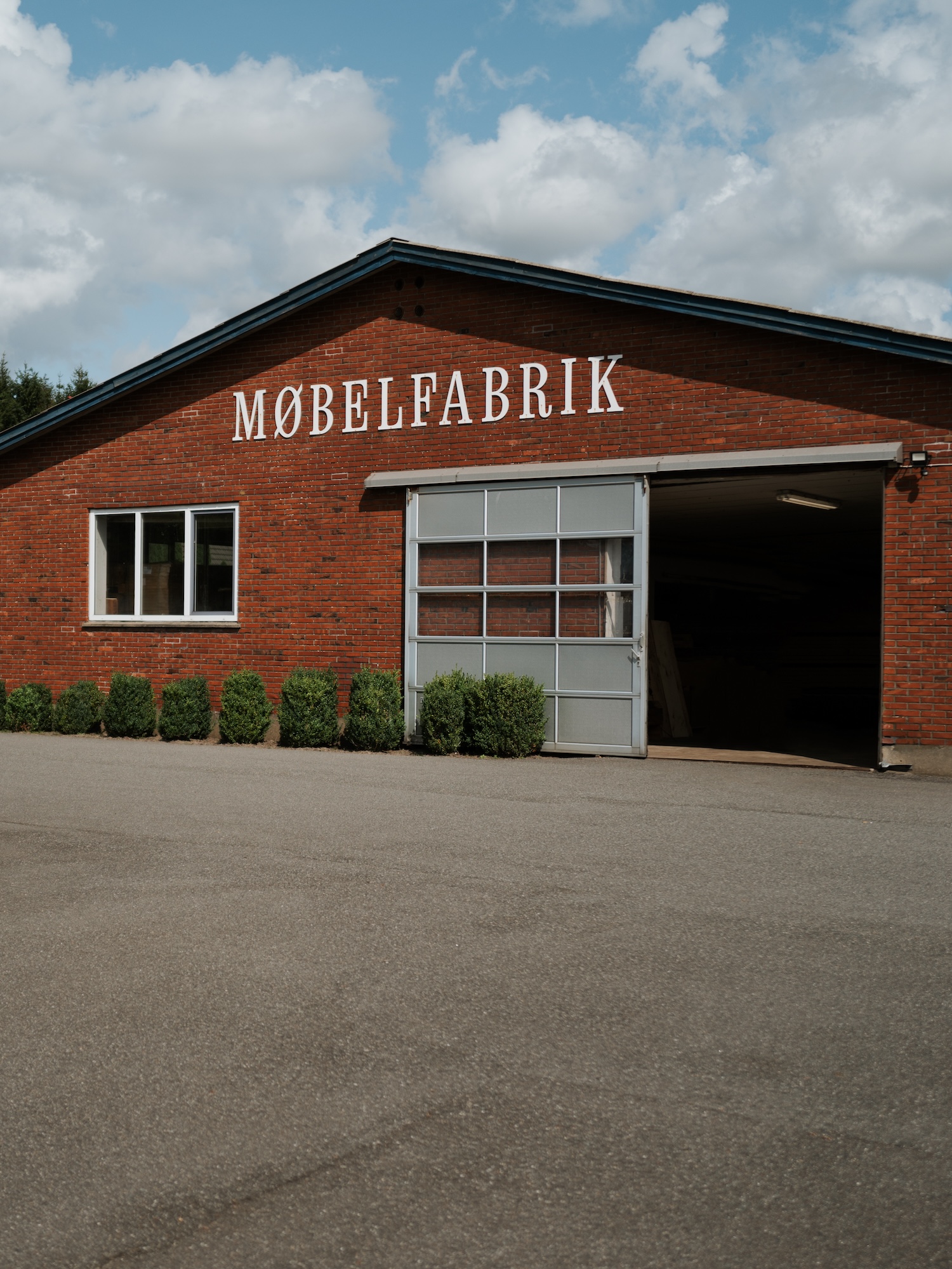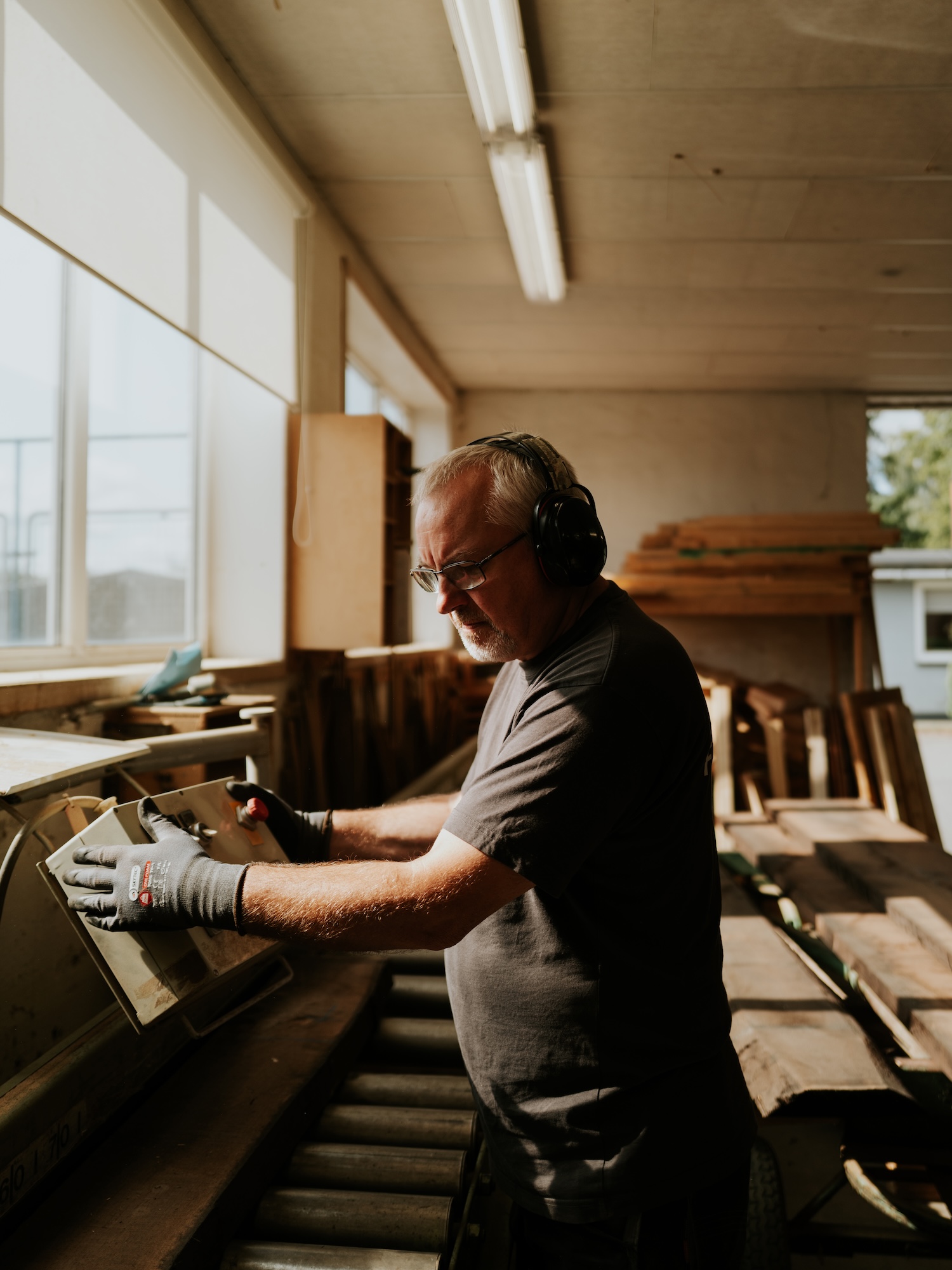An Anarchistic Journey: Personally Written by Founders Ivan Hansen & Hans Henrik Sørensen
In 1990, the head office of our newly founded company was the laundry room in Henrik’s mother’s basement, furnished with only a desk and two chairs. Designer Søren Holst had created a small series of furniture and a couple of candlestick holders, which we loaded into an inexpensive van. The engine needed a few taps with a wrench at a particular spot to start, but off we went to cultivate our market.

The Early Years
In 1991, we managed to move to a more suitable office, and at the same time, we replaced the old van with a new one that didn’t require any wrench-tapping. The larger van allowed us to travel more safely on the Danish highways and expand our collection to growing export markets in Scandinavia and Northern Europe.
Initially, our business model was much simpler. We aimed to base the company on external production through various suppliers to avoid the need to finance expensive machines and staff. Simultaneously, we pursued an aggressive marketing strategy. The introduction of the new company took place at the Scandinavian Furniture Fair in May 1991, where we showcased furniture designed by Søren Holst and, interestingly, door handles simply because they were aesthetically pleasing. The annual furniture fair in Bella Center Copenhagen was always a unique event with remarkable stands. Ours was no exception. During the very first exhibition, Ivan’s dad, “Old Hansen,” quickly assembled a rustic black floor space with polished nails, which was then scattered with sand.
The following year, we were offered a large stand at a very low cost. For this reason, we kept the room as it was, with a raw concrete floor and white walls. We borrowed a couple of huge, very old spotlights and an old vacuum cleaner from a local film company. To complete the look, we added an oversized American fridge stocked with Budweiser beer, and then the party began!
Although the enormous spotlights blinded most visitors, many still remember our stand as one of the best in our company’s history. Perhaps this was the beginning of our new raw approach to presenting furniture, or maybe it was the informal and anarchistic atmosphere that made the stand so memorable. Nevertheless, the furniture we showcased on the “junk-deluxe stand” was always of exquisite quality, just as it is today. This commitment has never wavered.
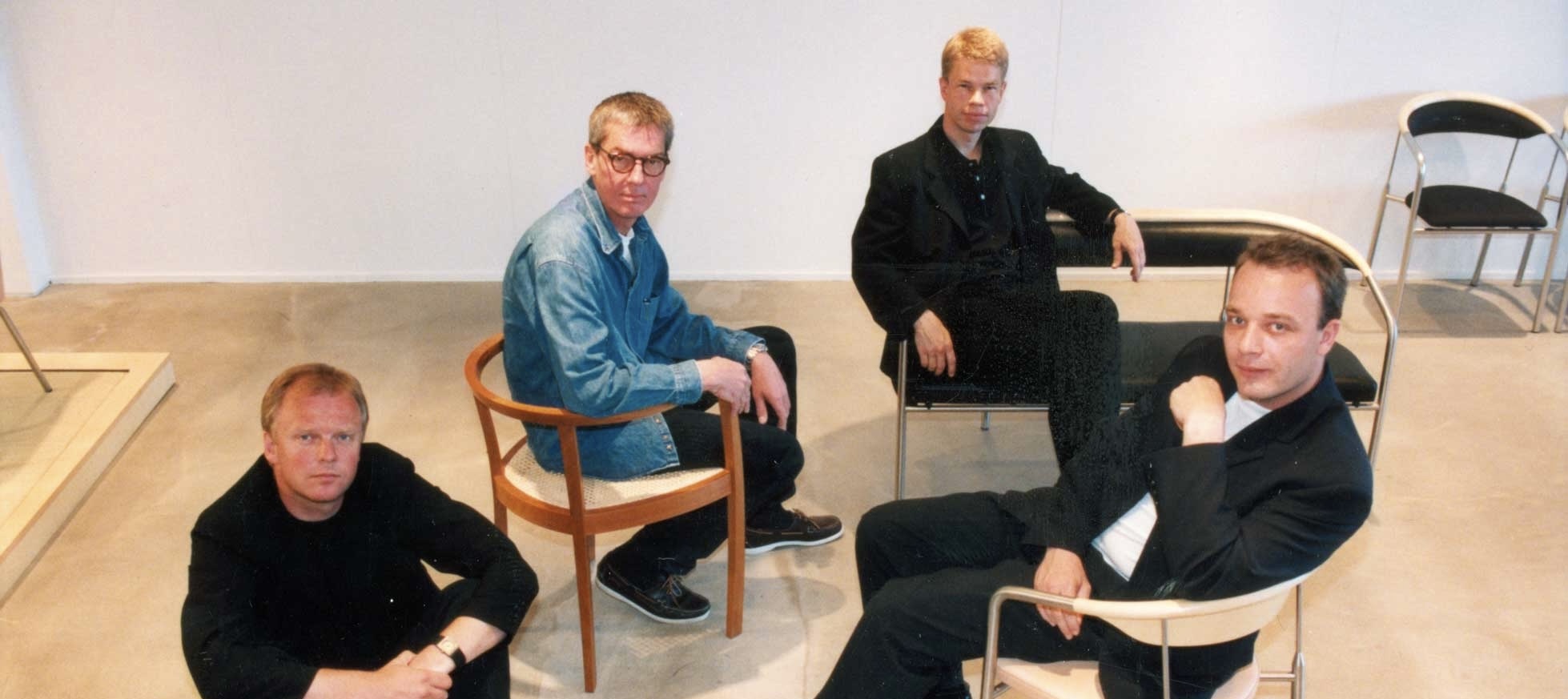
From left: Ivan Hansen, Søren Holst, Hans Henrik Sørensen and Henrik Tengler.
Working with the New Designers in the 1990s
We decided early on that if an architect or a project didn’t appeal to us, the answer would be negative, even if the project seemed attractive on the surface. However, there are always exceptions to the rule. This became evident when a young designer named Henrik Tengler contacted us. At that time, we already had a close relationship with another designer, Søren Holst, who designed for us and served as a mentor of sorts. Then, suddenly, this new designer from north of Copenhagen came to us with a design for a conference chair. The chemistry didn’t initially work, but Tengler was persistent and kept asking. His determination and belief in his project earned our respect, and we eventually agreed to produce the chair. Surprisingly, the chair later became our best-selling piece of furniture, with over 60,000 units sold to date. Over time, we developed a strong partnership and friendship with “the lad from the big city,” who continues to contribute significantly to the development of new furniture, even 30 years later.
Alongside Holst and Tengler, we cultivated a fruitful partnership and friendship that culminated in us receiving the prestigious “Møbelprisen” award in 1999.
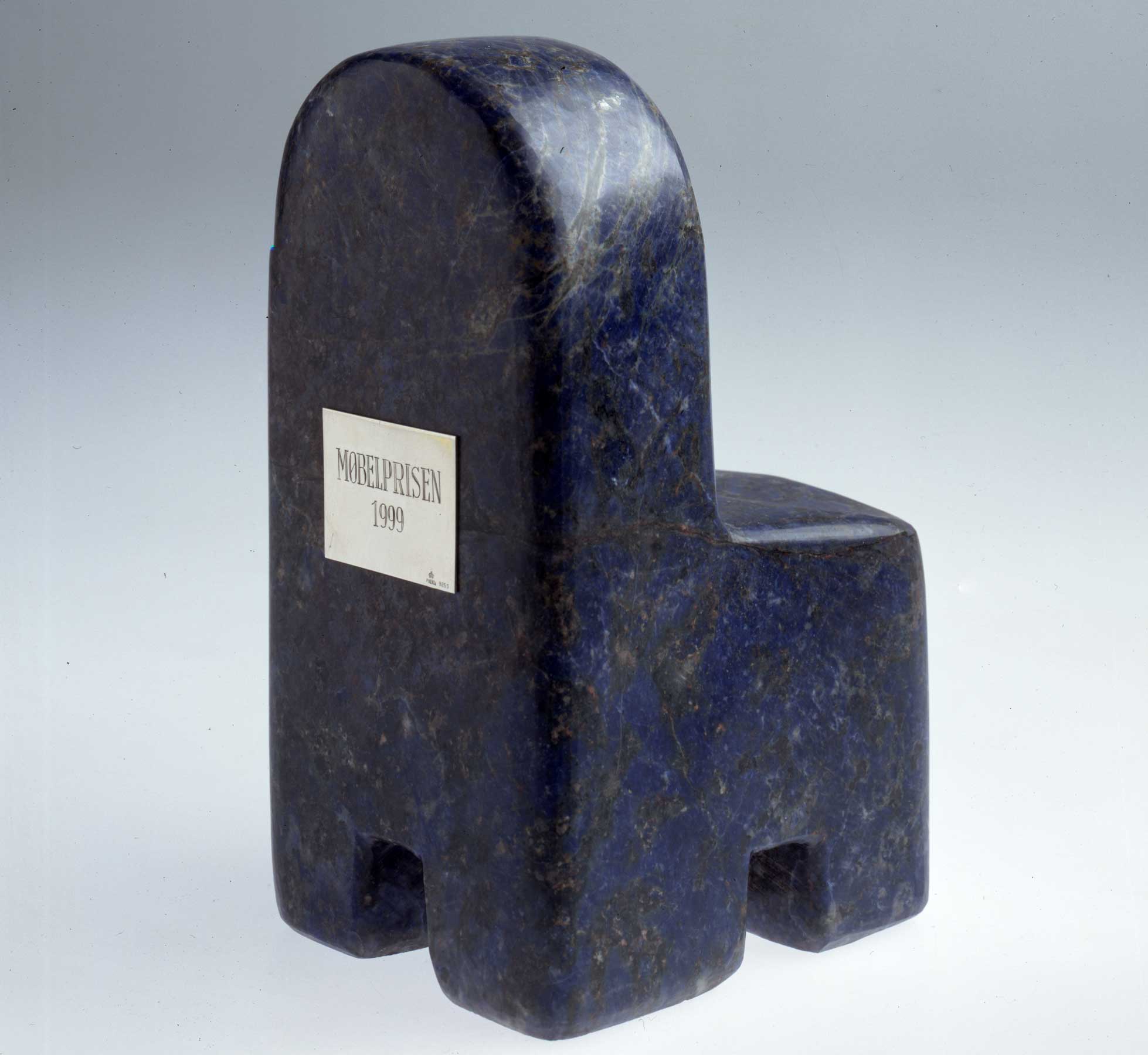
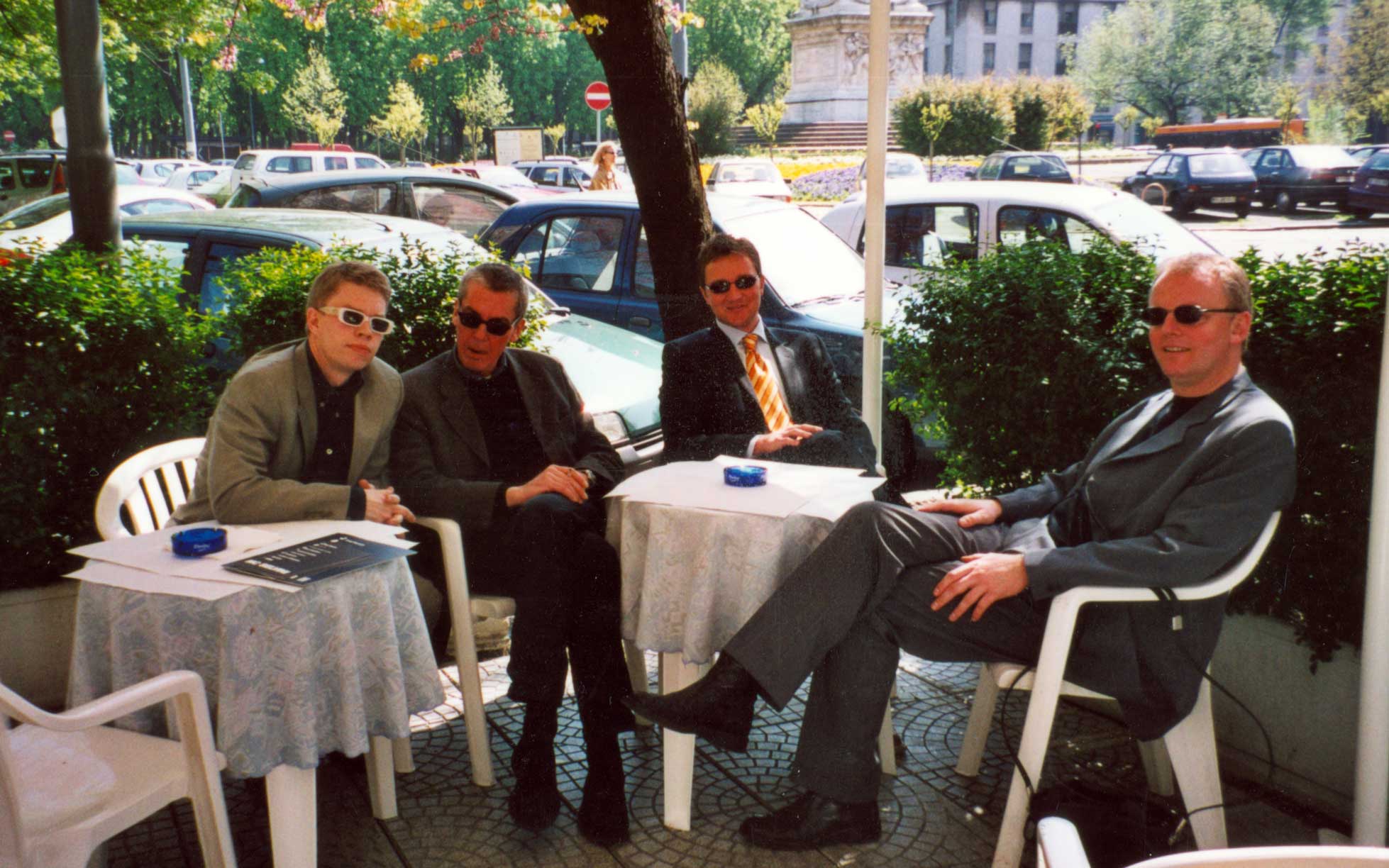
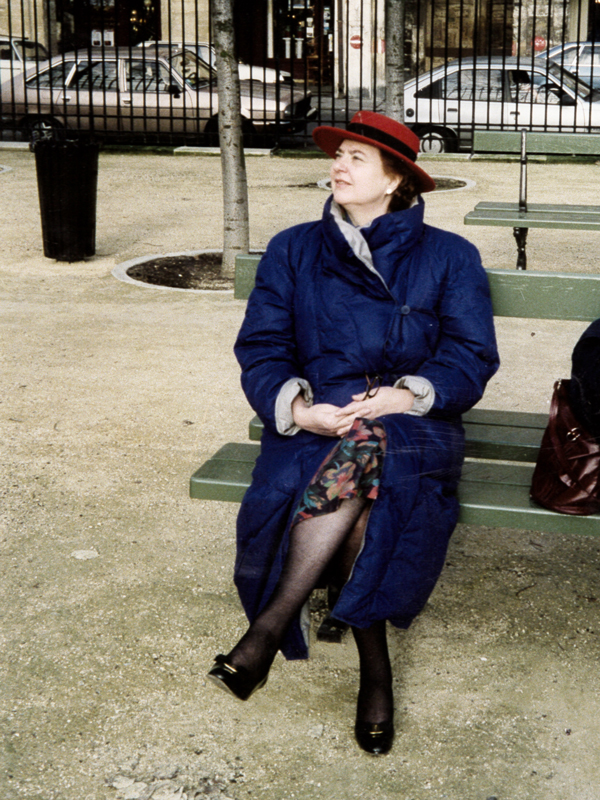
Embracing a Unique Opportunity: Finn Juhl’s Legacy
In 1999, we received a message from the widow of Finn Juhl, Hanne Wilhelm Hansen, with a proposal to create one of his designs—a sofa for a commemorative exhibition. Initially, we were surprised because we didn’t know Hanne Wilhelm Hansen. However, we did know architect Bård Henriksen, who was assisting Hanne in managing the rights to Finn Juhl’s furniture. He was the one who suggested that she contact us, “the guys from Ringkøbing.” The idea resonated perfectly with our ethos as we had long admired Finn Juhl. At that time, we never imagined that we would have the opportunity to work with his designs, his name, or his brand. Despite the considerable risk, given the limited interest in Finn Juhl and our own constrained budget, we enthusiastically accepted the challenge. Driven by passion and often navigating uncharted territory, we embraced the legacy and monumental task of reviving Finn Juhl from obscurity. When we first showed a Finn Juhl sofa, the 57 which Hanne had initially asked us to create, not a single Danish furniture trader believed in it. We were told outright: “You’re not going to be able to sell that!”
Into the Archives & the First Finn Juhl Show
Despite the lack of interest, we delved deeper into Finn Juhl’s materials and archives and sought permission to re-launch the Poet sofa and the Pelican chair. Hanne granted us permission and even gave us full access to Finn Juhl’s house, where she resided. Additionally, we consulted with Mr. Oda Noritsugu from Japan, who owned the world’s largest private collection of Finn Juhl furniture. With the help of skilled craftsmen, we recreated the two models.
The Pelican chair had only been produced in limited quantities in 1940, and now it was going to be reintroduced at the international furniture fair in Cologne, marking a new millennium. It was a gamble on our part. Finn Juhl’s furniture had not been exhibited for many years and had largely been forgotten outside the realms of art and design history.
The fair became a turning point for us as we showcased furniture that everyone seemed to have an opinion about. Some found the Pelican chairs ugly, comparing them to tired animals, while others found them amusing, and there were those who considered them simply brilliant.
Despite the mixed reactions, Finn Juhl’s furniture immediately brought us in contact with foreign parties interested in the pieces. A large U.S. company expressed a desire to reintroduce Finn Juhl’s furniture to the U.S. market and visited us on September 12, 2001. However, this was right after the Twin Towers in New York City had fallen, and selling Finn Juhl’s furniture proved to be more challenging than we had ever imagined.
Despite the difficulties, we couldn’t refuse when Hanne one day asked us if we wanted to take over all rights to Finn Juhl’s furniture, saying, “We have such a nice time together; would you be interested in the official rights to the complete furniture archive?”
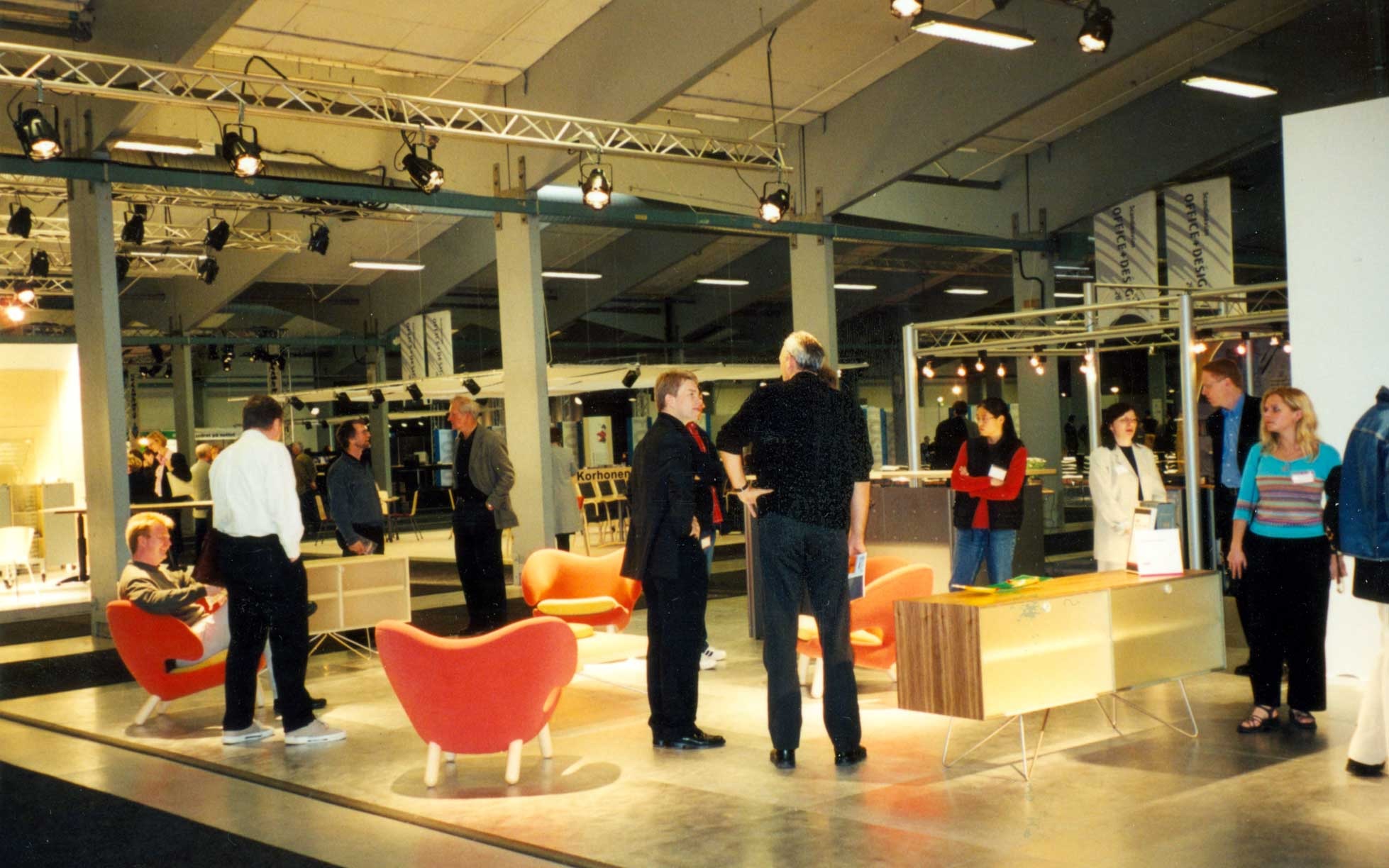
Opportunity and Challenge
We weren’t thinking rationally about the consequences at the time, and we’re glad we didn’t. Finn Juhl’s furniture consists of unique masterpieces that demand the utmost respect in every possible aspect. They are costly to develop, manufacture, and keep in stock. Sales were initially slow. We also had to contend with many self-proclaimed experts and arbiters of taste. Vintage pieces crafted by master joiner Niels Vodder and Bovirke found their way to auction houses and were considered genuine and original, while our re-launched models were initially viewed as “new copies of dubious nature.”
In reality, our models were manufactured exactly like the furniture in Finn Juhl’s own house. The only difference was the use of high-tech CNC machines, paired with our craftsmanship, which provided unique opportunities for the furniture’s organic design and delicate seams that could withstand everyday use.
Nothing is ever definitive when discussing what is right and wrong about Finn Juhl’s designs. He wasn’t a craftsman himself but always worked closely with one, and often both parties left their mark on the result. This is why it has been important for us to study Finn Juhl and get to know him, as he is no longer present. We have always held firm to the belief that the world would recognize the value of Finn Juhl’s artistic furniture.
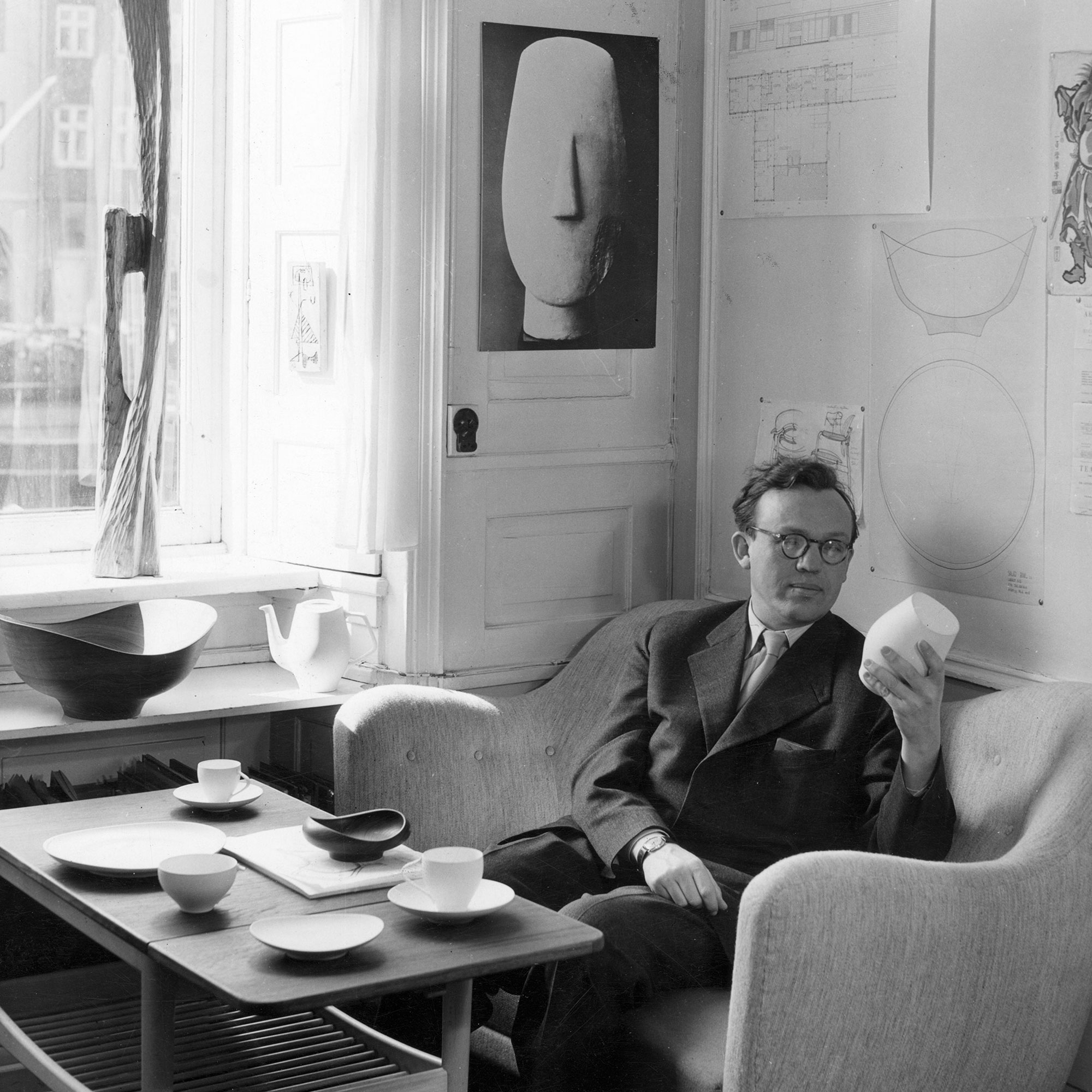
A New Era: The Growing Interest
Gradually, we began building a network of dedicated retailers and unique design traders spanning from Japan to the U.S. Over time, we experienced how Finn Juhl took us on a fantastic journey around the world, where we met furniture enthusiasts everywhere.
A professional board of directors would likely have turned down the offer when Hanne Wilhelm Hansen asked us to take over the rights to Finn Juhl’s furniture. Fortunately, we didn’t have one. The freedom to make certain decisions ourselves and face the consequences of our actions is the very reason this journey has been enjoyable at every step.
Following this, we observed that people finally stopped questioning the originality of our Finn Juhl relaunches.
Relaunching and working with Finn Juhl’s design heritage was not solely the work of one hand. It occupied almost all our time, and mentally, we became deeply immersed in the world of Finn Juhl. It became our life’s work for over 25 years. The story of Finn Juhl is incredibly rich, and the more you delve into it, the more fascinating it becomes.
We have mirrored ourselves in Finn Juhl, the way he went against the current and followed his heart instead of the trends of the time. We never doubted that his design would remain relevant for a changing world. Finn Juhl’s design is universal and organic. It is not mathematically calculated but relates to nature’s own shapes, with human proportions and daring details that stimulate the senses. Finn Juhl’s design is a feeling and goes beyond mere functionality; it speaks to people.
It is no secret that for many years, our work with Finn Juhl’s designs consumed much of our time and resources, leaving little room for developing new designs with contemporary designers. They were often overshadowed while the spotlight was on the relaunched Finn Juhl models. This wasn’t ideal, but it was necessary. However, our ambition has always been to continue collaborating with Danish contemporary designers alongside our work on Finn Juhl’s legacy. It was time to embark on a new era where the two paths could merge.
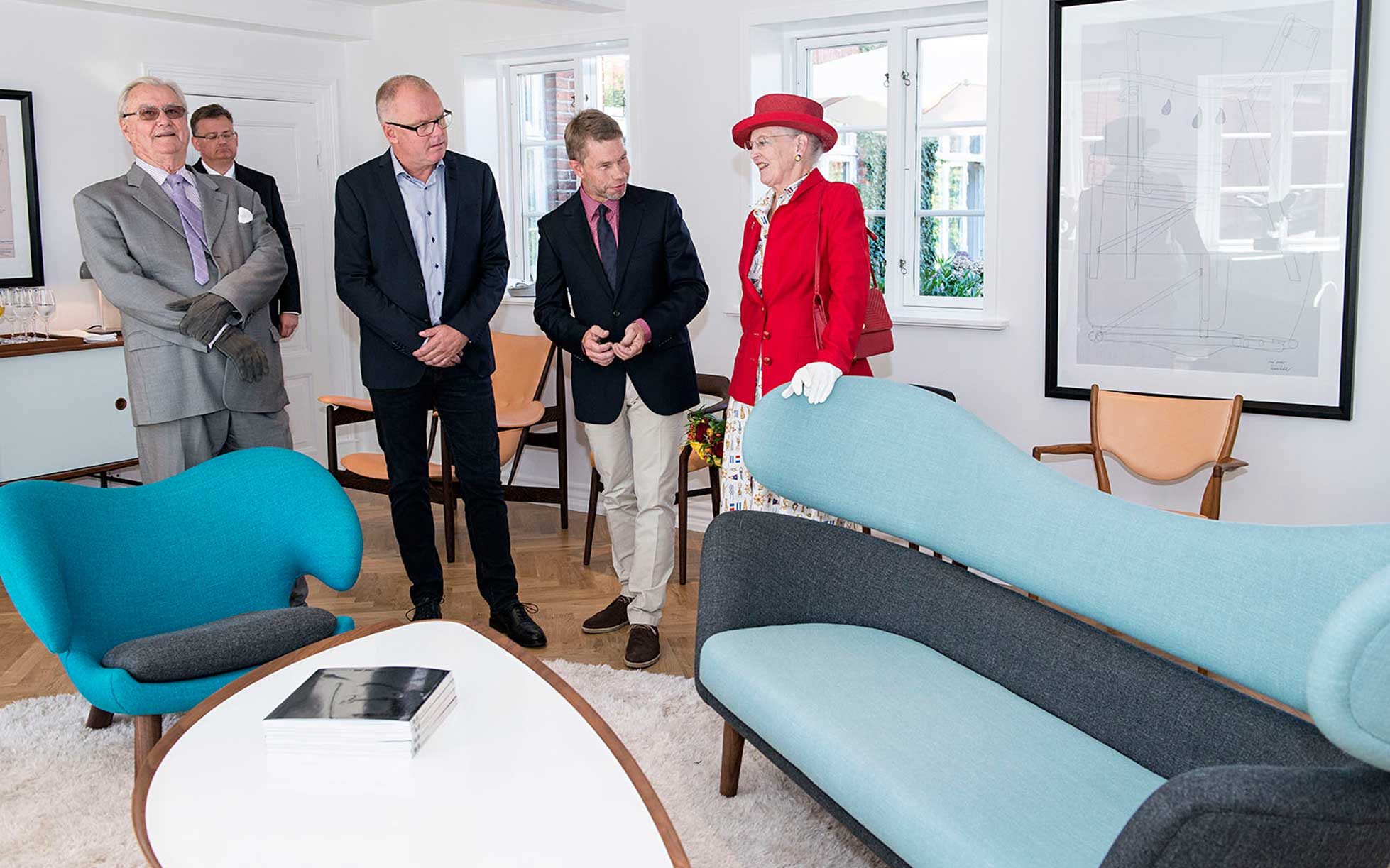
In 2014 Prince Henrik and Queen Magrethe II visited OneCollection’s former showroom in the city of Ringkøbing.
The Merging Point: New Talent Meets Finn Juhl
In 2009, we were contacted by the Ministry of Culture because, in connection with the renovation of the United Nations headquarters in New York, the Danish government wanted to donate money to restore and preserve the Trusteeship Council Chamber. This chamber, popularly known as the Finn Juhl Chamber, is considered important Danish cultural heritage on par with the Sydney Opera House. The reason for this is that in 1950, Finn Juhl was chosen to fully furnish the chamber, which is one of the three permanent council chambers at the UN. Finn Juhl successfully completed this task, which solidified his reputation as an international designer. Therefore, we were brought into the project because the original chairs for the delegates had been replaced over time, and there was a desire to restore the chamber to its original appearance.
We were tasked with recreating a total of 260 Finn Juhl chairs, model FJ51. Simultaneously, the Minister of Culture had the idea that not only should Finn Juhl be celebrated as an excellent designer, but there should also be a design competition among Danish designers for the linked tables in rows for the delegates, a design that Finn Juhl had never created before, as well as chairs for the secretaries who held a central place in the chamber.
So, we had to enter into a firm agreement in advance for the production and delivery of the Finn Juhl chairs, along with all the other furniture for the council chamber, without knowing the designers or the design of the furniture. It took four years from the time we received the request until the chamber was completed and reinaugurated in April 2013. The time in between was a struggle for our small company in Ringkøbing. A battle for funding, a race against time, and, above all, a challenge to learn the system, navigate, and lobby among ministries, authorities, consulates, missions, architectural firms, contractors, and especially within the UN, which is a world unto itself.
We had no idea what we had said yes to in 2009. We felt used to solve a problem for both the Ministry of Culture and the Ministry of Foreign Affairs, but as always, we took the task seriously. Through personal connections with high-ranking individuals in both Denmark and the UN, we gained significant trust that ultimately helped us overcome obstacles. We carried out this complex and monumental task in one of the world’s most significant meeting rooms, where every UN member country is represented by a seat, now crafted by OneCollection. However, we were not alone in this endeavor. The design competition, which was held, was won by the design duo Kasper Salto and Thomas Sigsgaard with a project that convincingly captured Finn Juhl’s spirit and nearly completed Finn Juhl’s project.
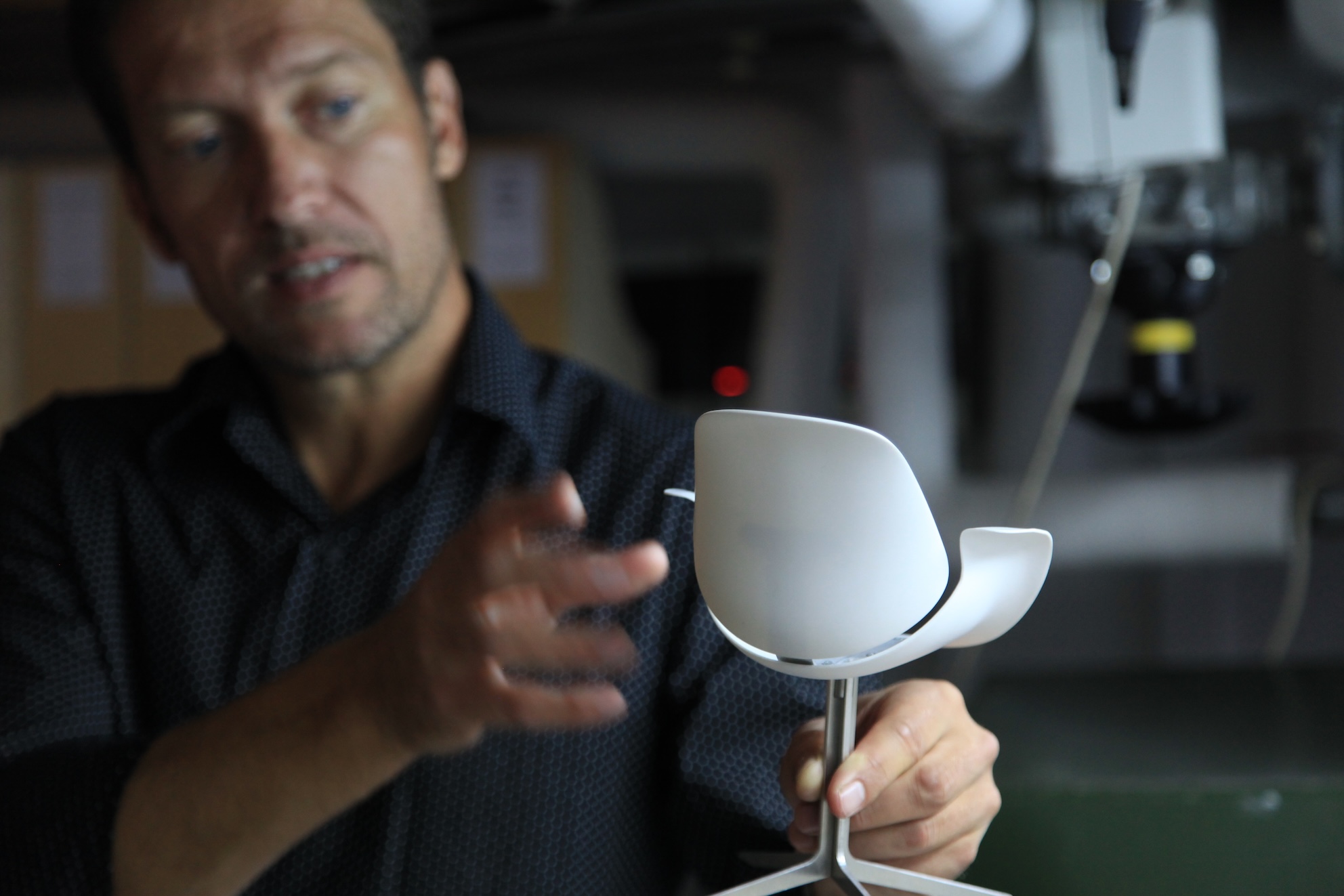
The collaboration with Salto & Sigsgaard was a major win for us, one that we took with us from the UN project. We knew Kasper Salto very well as a fun and friendly guy, but also as an exceptionally talented designer—perhaps one of the greatest talents in the field today. Through our work on the UN project, we truly got to know Thomas Sigsgaard, who is trained as an architect, and this provided a new boost of energy and an idea that we could indeed see Finn Juhl and new design coexisting in an aesthetic and functional context. The chair designed by Salto & Sigsgaard for the Finn Juhl Chamber is a beautifully crafted piece of design named the Council Chair, which OneCollection has been producing ever since.
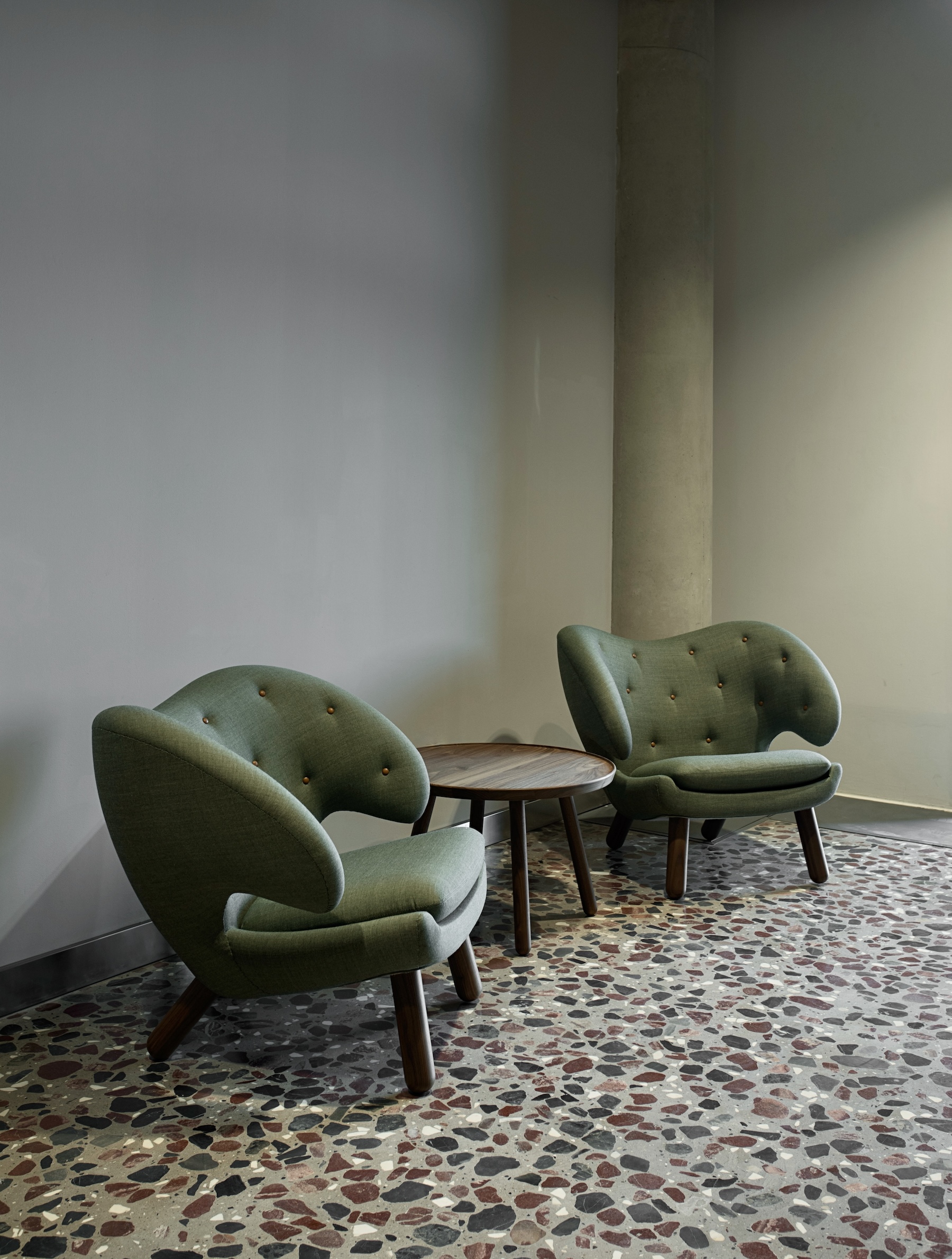
Merging Projects while Separating Brands
In the following years, we have completed many significant and prestigious projects, often incorporating the Council Chair into the design alongside various Finn Juhl pieces in the same setting. These included projects for organizations like the New Carlsberg Foundation, the Industry Foundation, Oxford University, Sino-Danish University in Beijing, and many more.
In 2017, the Finn Juhl collection had grown so extensive that it made sense to establish a separate brand for Finn Juhl under the name “House of Finn Juhl”. Time has shown that this was indeed a great idea. With a focus on branding and a social media presence strategy, we concentrated on establishing ourselves in export markets. Today, we export furniture to more than 50 countries. Having a dedicated Finn Juhl brand allowed us to collect the rest of the design collection into a contract collection for the professional market.
In the other collection, the Council Chair evolved into an entire furniture series called the Council Family. This series was completed in conjunction with the furnishing of the 350-meter-long foyer at Gødstrup Hospital in 2021, for which the series was developed. This project was exceptionally ambitious, taking place in a public space featuring artwork by Erik A. Frandsen, where Finn Juhl’s furniture also played a role in selected areas, creating a beautiful and functional whole.
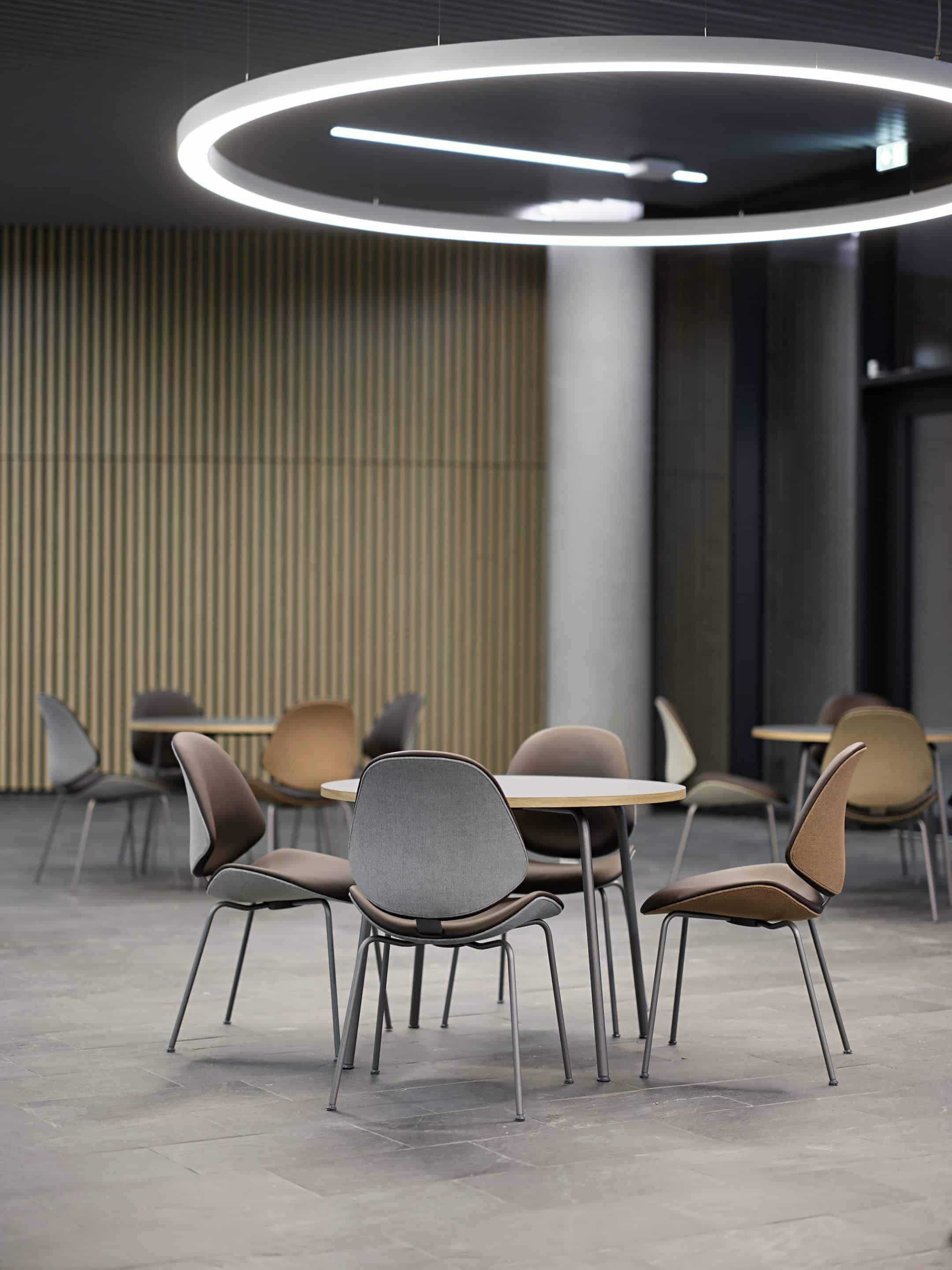
In 2022, we completed our new headquarters in the city of Ringkøbing, which is our home. Our goal was to create a modern office space and warehouse that reflect OneCollection’s identity and values as a design company. We put a lot of thought into the design and materials to harmonize with the natural surroundings. The building’s exterior is covered with corten steel and wooden panels, and there are large windows that bring in plenty of natural light and offer transparency inside. The new headquarters stands at a height of 8.5 meters, providing a beautiful view of Ringkøbing Fjord.
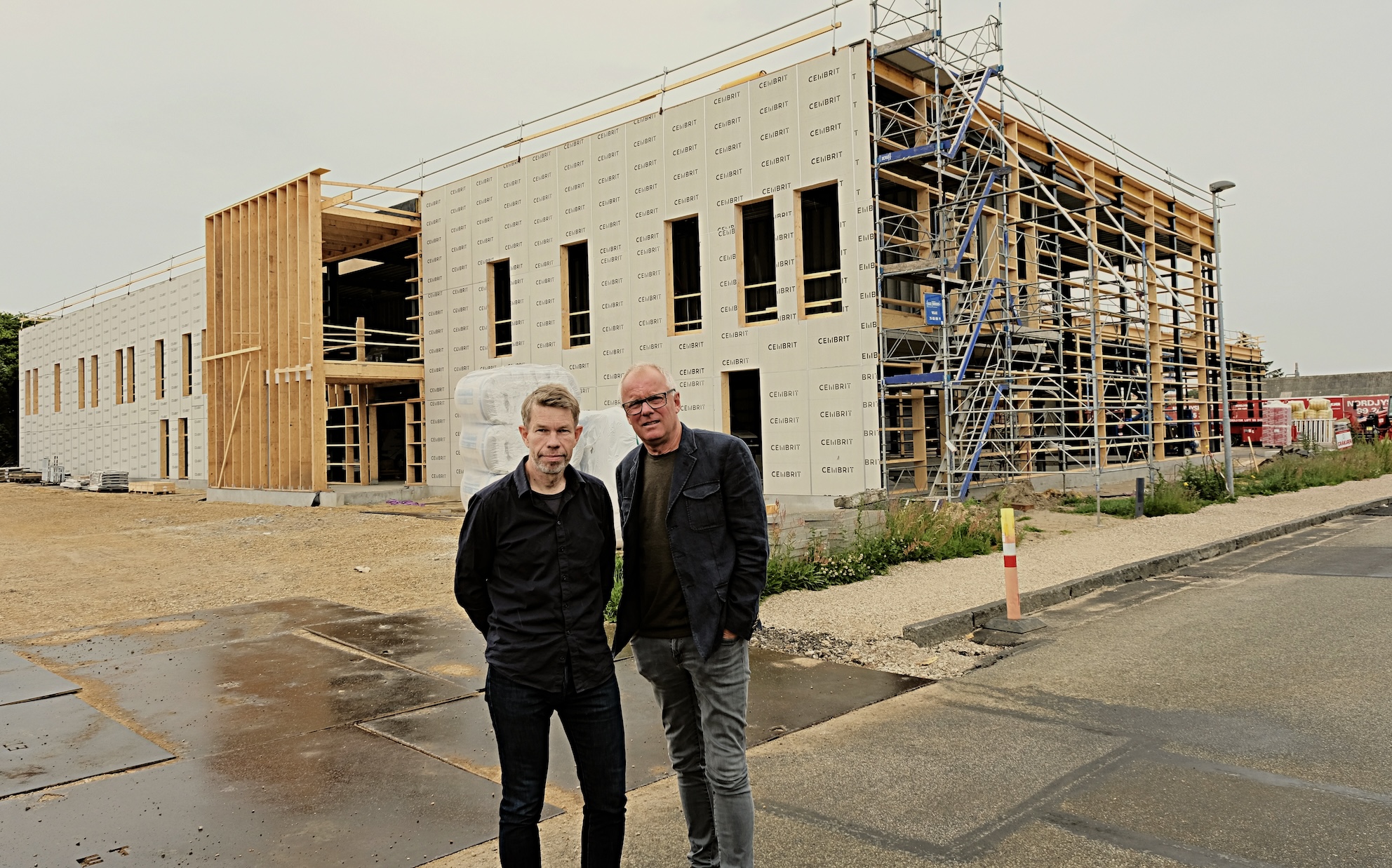
Hans Henrik Sørensen (left) and Ivan Hansen (right) in front of the new OneCollection headquarters in the city of Ringkøbing.
In 2022, we also acquired Schou Andersen Møbelfabrik in Vejen, a company with a century-long history, spanning four generations of family ownership, specializing in high-quality furniture for the care market, including hospitals and nursing homes. The purpose behind this acquisition was to bring the production of solid wood chairs, particularly our Finn Juhl collection, in-house, previously manufactured in Japan. As time passed, our interest in this market grew, driven by the belief that our innovative mindset could breathe new life into a traditionally conservative industry, making furniture for physically challenged individuals more exciting, engaging, and, most importantly, dignified. Finn Juhl’s sensory and dignified furniture embodies these values, and it is these principles that guide us.
Under the OC (OneCollection) brand, with “care” among our four categories, we’ve forged a new path, crafting a dedicated collection tailored primarily to the professional market, encompassing office & conference, hospitality & culture, residential, and care. Explore our collection to discover our designs and the philosophy that infuses each piece of furniture
